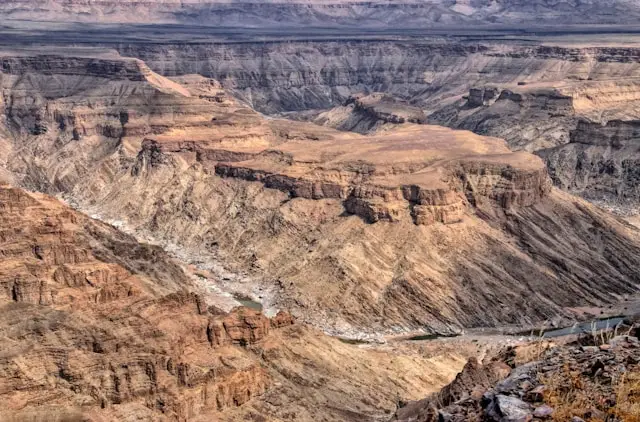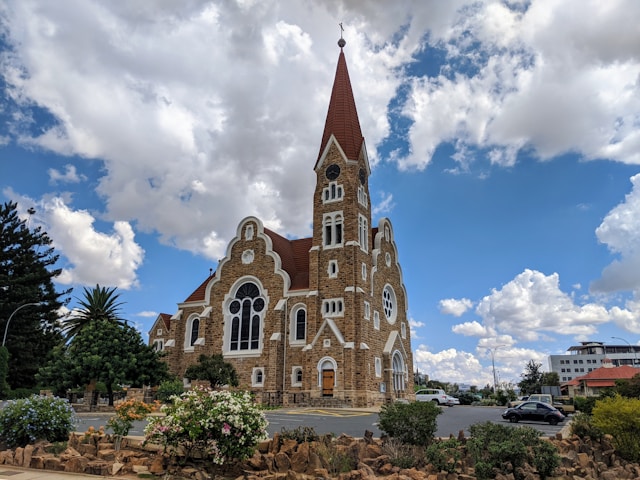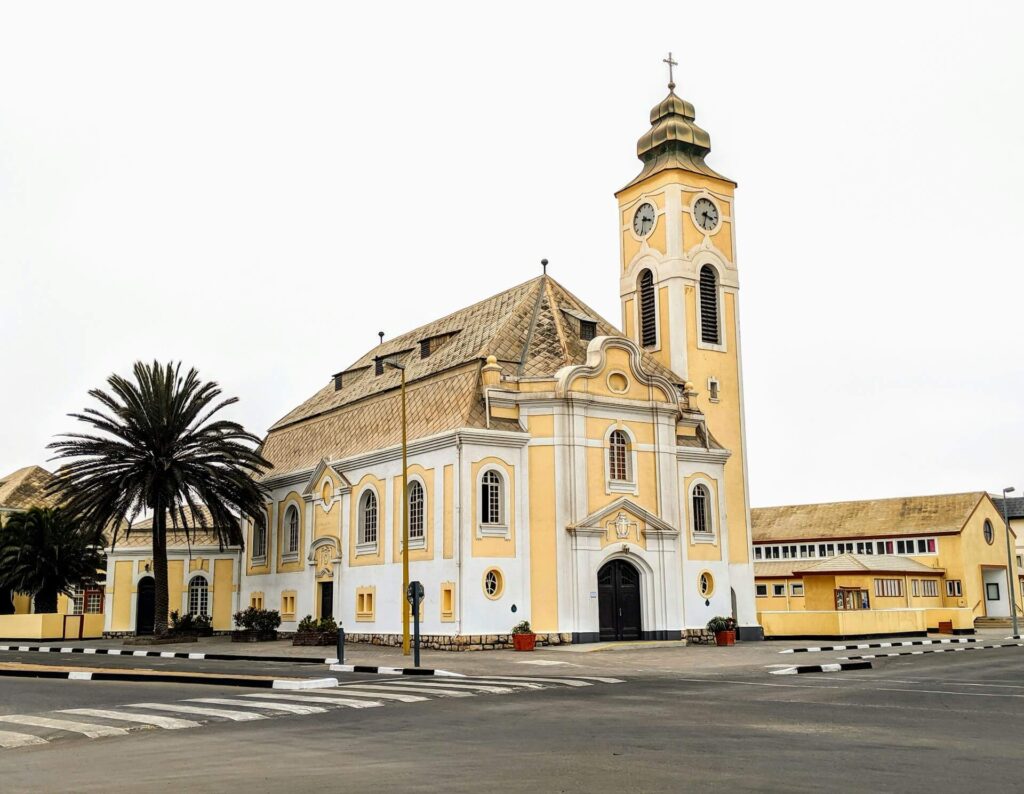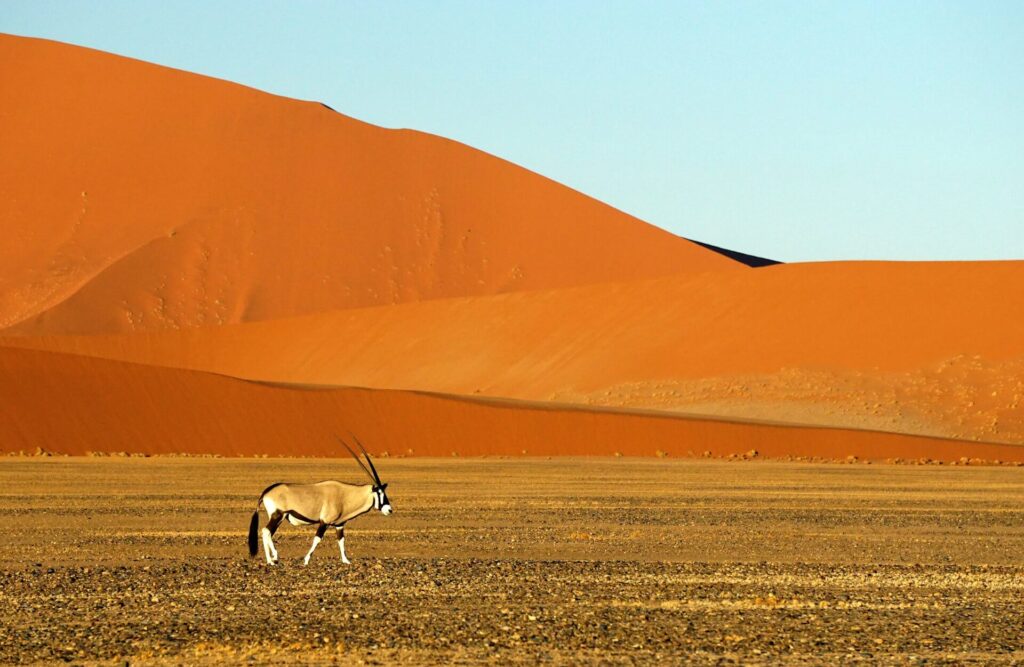Imagine standing on the edge of one of the most dramatic Natural Wonders of the world; this huge river canyon, second only in size to the Grand Canyon in Arizona, is just waiting to astonish you. Far below your feet the narrow Fish River winds its way along the canyon floor for 160km from North to South, inviting you to come and follow its exhilarating trail…
Fascinating Fish River Canyon
Arriving at the main viewpoint on the lip of the Canyon by road is something of a shock to the senses. As you drive for kilometre after kilometre along the flat and dry plateau, there is absolutely no hint of what is in store for you. Stepping onto the viewing platform will take your breath away as you see the dramatic splendour of the Canyon unfurling an incredible 500 m below your feet. Down in the floor of the Canyon is another world, quite distinct from the dry and barren ground above…here there are pools of permanent water, hot springs, most unusual vegetation and a host of wildlife. By now, your feet will be itching to explore it all – bring on the hiking boots!
A Little History
The mighty Fish River Canyon is as old as time itself! Over 500 million years ago, seismic disturbances in the Earth’s crust caused the valley floor to drop; years and years of erosion by wind and water are responsible for the sheer cliffs and deep ravines that make up the canyon today. It is now 160kms long, 27kms wide and over 500m deep at places. The Fish River, which makes its tortuous route along the floor of the canyon, is often almost dry, but rains can cause it to change rapidly into a raging torrent, continuing the erosion process. There are several good viewpoints, but the diversity of habitat, plants and animals of the canyon is best admired by hiking this remote and pristine canyon trail. The local people have never heard of seismic disturbances and tectonic plates, and instead have their own colourful legends regarding the origins of the Canyon, some believing it was created by the death throes of a giant serpent, while others tell tales of a dragon’s thrashing tail. You will hear all these stories around the campfire!

The Fish River Canyon Hiking Trail and other Highlights
Trails in the Fish River Canyon
For the energetic and fit, hiking the Canyon is a highlight of any visit to Namibia. Guided Trails generally take 4 or 5 days and will put you right in the heart of the Canyon, with the soaring cliff sides towering above your head as you make your way along the floor for 89kms from north to south. You have the opportunity to get up close and personal with the unusual animals and plants that are at home in this remote wilderness and your guide will make sure that you leave with a deep understanding of the ecology and geology of the region, not to mention the colourful ancient legends. You will sleep under the stars and swim and wash in the natural rock pools, while enjoying the absolute solitude that the canyon provides to those who are keen to seek it. There are also walking trails along the rim of the canyon, which offer great views but are much less exciting!
Wildlife in the Canyon
The Fish River Canyon is situated in the Ai-Ais Richtersveld Transfrontier Park, which straddles the border between Namibia and South Africa. At first glance, you may think that this is a barren and lifeless landscape, but the park encompasses one of the most species-rich dry zones in the world and supports an incredible diversity of plants and animals, some of which are found nowhere else on earth. All along the floor of the canyon, there are permanent pools of water which support many animals, including Mountain Zebra, Kudu, Steenbok, Gemsbok and Springbok. The most unusual and unique inhabitant of the Canyon is the Klipspringer – this is the Afrikaans name meaning “rock jumper”, and this is exactly what this incredibly agile little antelope does with amazing dexterity! The Klipspringer has an adapted hoof structure which enables it to walk on tip-toe (or tip-hoof!), which gives it extra grip when jumping from rock to rock. It also leaves a unique double-rounded spoor which is quite easy to follow once you know what you are looking at. All these mammals inevitably attract predators, and Leopard, Jackal, Brown Hyena and Bat-eared Fox have been sighted in the canyon. The pools of water are home to Sharp-tooth Catfish and Yellow Fish, which are preyed upon by the occasional Leopard and the African Fish Eagle. There are also many species of reptiles, insects and small rodents that have perfectly adapted to life in this challenging habitat.
Bird Watching
Bird watching in the canyon is also very rewarding – expect to see Goliath Heron, Storks, Cape Robin Chat, Olive thrush and Egyptian Goose, among others.
Other Attractions of the Fish River Canyon
If you are not up to embarking on a rugged walking trail in the Canyon, do not despair! There are amazing views from the three primary view sites which can be reached by road in a 4X4 vehicle (your Tour Operator will arrange everything for you) and the two Lodges at the northern and southern ends of the Canyon each offer some of their own attractions….at the northern camp you can go on various 4X4 trails and day trips, while at the southern camp there are wonderful thermal springs to enjoy.
Accommodation at the Fish River Canyon
If you do the hiking trail, the canyon floor will be your bed and the starry African sky will be your ceiling! Your camping gear and supplies will be carried by mule, and you will enjoy an unrivalled back-to-Nature experience.
The eco-friendly Fish River Lodge is perched right on the lip of the canyon, and there are magnificent views from all the rooms and the common areas. From here there are several organised activities for those who do not wish to do the hiking trail. The Lodge offers Scenic Sundowner Drives along the canyon rim, a 4X4 Day Canyon Drive into the heart of the canyon, as well as a 1-Day abbreviated Canyon hike for those who would like a taste of what is in store on the 4 or 5 day hikes.
There are several other Lodges near the Canyon offering all styles of accommodation from luxurious to rustic, and most of these will offer guided walks, hikes and drives.
At the southern end of the Canyon are the Ai-Ais Hot Springs and the Ai-Ais Resort, where you can enjoy the thermal waters and relax those aching legs after 5 days of hiking the trail.
How to Get There
The Fish River Canyon is situated in the Ai-Ais Richtersveld Transfrontier Park, which straddles the border between Namibia and South Africa, and it takes nearly nine hours by road from Windhoek to Hobas, where the main viewing site is situated. A far more attractive option is to fly in from Windhoek by charter, which will take under 2 hours and give you a superb birds-eye-view completely free of charge!
Best Time to Visit
The summer months (November to April) can be unbearably hot with the mercury reaching over 40 °C on a regular basis. The Canyon Hiking Trail only operates during the cooler months from May to September.



